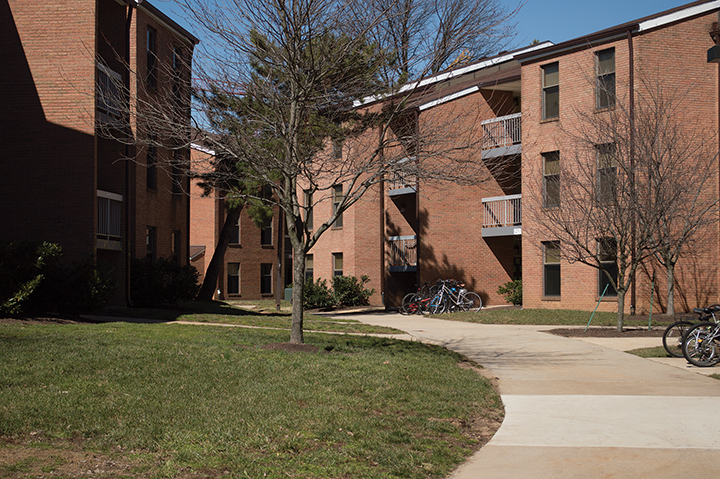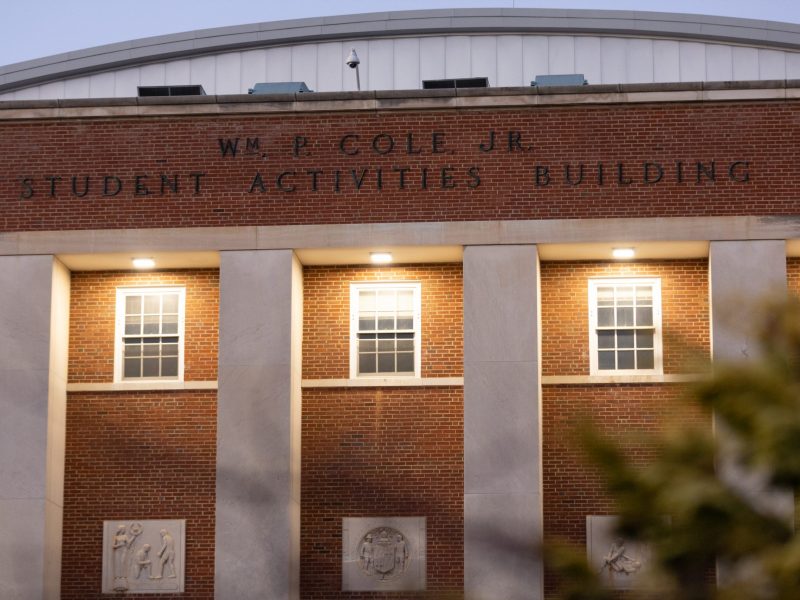The Department of Resident Life is promoting the Leonardtown Community as a viable housing option after vacancies and a surplus of freshmen led the University of Maryland to place many new students in the apartments, which are typically reserved for older students.
When the university provided on-campus housing for Freshmen Connection students this past fall, Resident Life had to find housing beyond the North Hill dorms for the almost 900 additional students, said Scott Young, the department’s associate director of administrative and business services. Given its high number of vacant rooms, Leonardtown’s apartments housed about 125 freshmen.
Ross Berman, a freshman living in Leonardtown this year, said the apartment is spacious compared to a traditional dorm room, but overall the living situation leaves much to be desired.
“It makes it very difficult for freshmen to meet people,” the finance and supply chain management major said. “It’s hard being placed here at a college where most people just stick with their halls.”
Berman said Leonardtown is better suited to sophomores and juniors who have already established friendships and connections at the university.
Resident Life is aware of the dilemma. Young said students get close with their roommates when living in apartments but have little to no interaction with their neighbors.
“There are some students who might say this is fine,” he said. “But really, for new freshmen, we think that living in a traditional hall on a traditional floor is the best way to get exposure to a lot of students very quickly. We think being in that big atmosphere with elevators and shared bathrooms and common areas makes it easier to create connections.”
Resident Life would rather keep freshmen in traditional dorms in the future, Young said.
To draw more upperclassmen to Leonardtown, Resident Life is hosting an event called “Explore Leonardtown Livin’,” after which it will raffle off a free semester of housing in the community.
The event, which will take place March 9 at the Leonardtown Community Center from 3 to 6 p.m., is designed to encourage returning residents to consider applying for housing in the apartment-style community.
Only students who attend the open-house event and are eligible to return to on-campus housing will be considered for the raffle. The winner will receive a free semester of housing and will get to select five roommates for the next year.
“It stemmed out of the room-selection process last year,” Young said. “After room selection, we noticed we had a lot of vacancies in Leonardtown. We found out through some conversations we had that a lot of students didn’t even know anything about Leonardtown. The only thing students knew was that it was across Route 1 and really far away.”
Resident Life will also raffle off smaller prizes and will be running shuttle buses to and from the area.
Resident Life officials hope the event will highlight the benefits of Leonardtown and alleviate many of the concerns students have, particularly related to its location, Young said.
“We’re very far removed from campus,” Berman said. “We don’t have any buses that come to us, minus the weekends. It’s difficult having to walk 25 minutes to get to classes.”
While Leonardtown, which is behind Fraternity Row, is about a mile from some academic buildings, it is closer to buildings on the eastern side of the campus, such as Reckord Armory. It is also closer to Route 1 establishments than some other dorms are.
“I don’t really mind how far it is from classes,” said Leonardtown resident Dylan Clay-Devlin, a sophomore psychology major. “Having a kitchen is nice. The fact that it has both singles and doubles is nice, and how close it is to Route 1 is great.”
Young said Leonardtown is perfect for students in Greek life who are looking for housing close to the chapter houses on Fraternity Row and the Graham Cracker.
Old Leonardtown is also right next to a Paint Branch Parkway bus stop for the 104 College Park Metro shuttle, making it easy to travel to the Washington area, he said.
However, students have also expressed concerns over the conditions of the rooms.
“The bathrooms are disgusting and nasty and gross and old,” Clay-Devlin said. “Parts of the ceiling sometimes fall off. The walls are thin. I know the people below me, and we text each other entire conversations that we’ve heard through the walls.”
Residential Facilities has been working over the summers to update Leonardtown kitchens and bathrooms, Young said, and despite the concerns about the rooms themselves, he said the low demand this year was related to the room selection system.
“The way the room-selection rules worked is that if you didn’t have six people, you wouldn’t get placed in a room there,” he said. “We asked ourselves, ‘Is there a way to allow smaller groups to live there?'”
As a result, Resident Life is considering bringing together smaller groups of students — such as a group of four with a group of two — to fill the larger spaces, he said.
Clay-Devlin said he is glad he did not live in Leonardtown last year.
“Living in a dorm sucked, but I am at least glad I did it,” he said. “I feel like it’s the freshman thing to do.”



